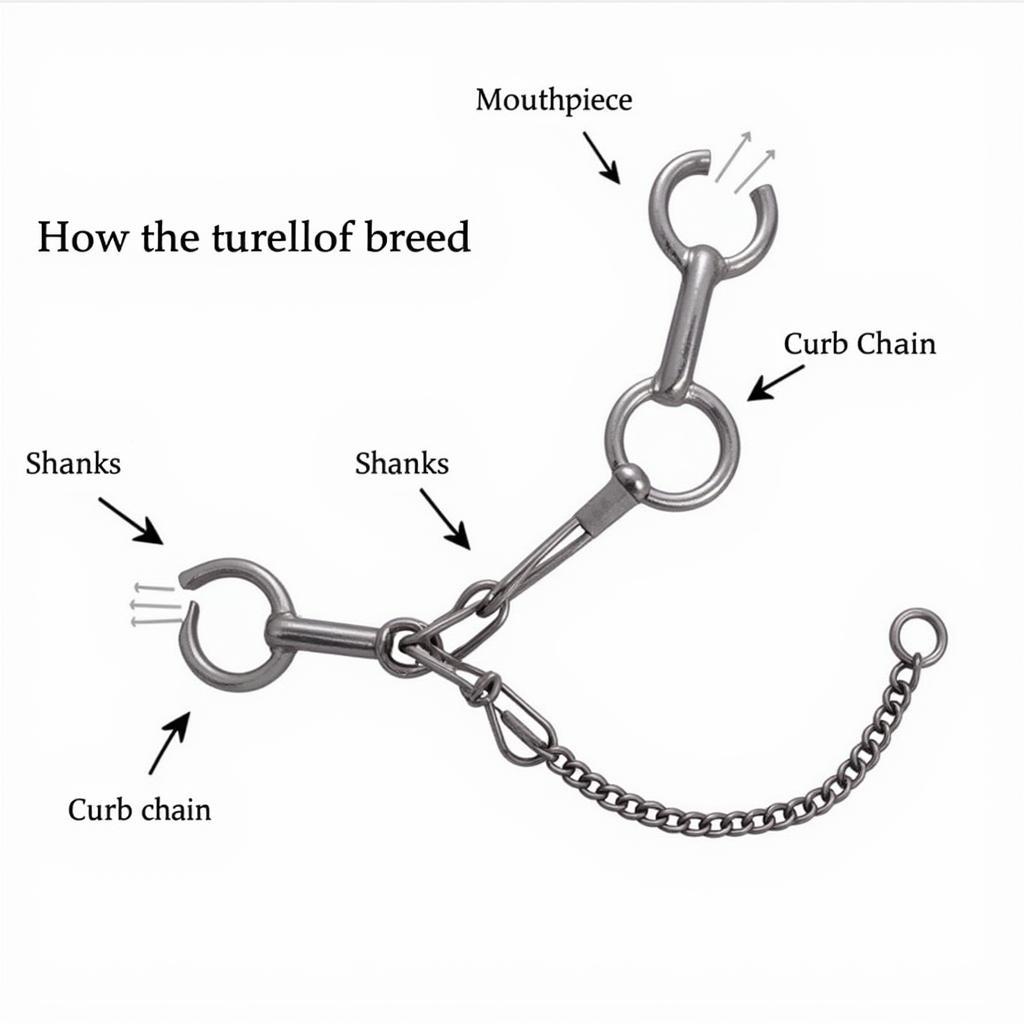Half Breed Horse Bits are a popular choice for riders seeking a balance between control and comfort for their horses. This article delves into the specifics of half breed bits, exploring their design, appropriate uses, and potential benefits and drawbacks. We’ll also address common questions and misconceptions surrounding this versatile piece of tack.
What is a Half Breed Bit?
A half breed bit is a type of curb bit, characterized by a fixed mouthpiece with shanks. It combines elements of both snaffle and curb bits, offering more control than a snaffle but less leverage than a traditional curb bit. The design typically features a mullen or ported mouthpiece and medium-length shanks, providing a clear signal to the horse without excessive pressure. Choosing the right bit depends heavily on the individual horse’s mouth conformation and the rider’s experience level. Understanding how this bit works is essential for its effective and humane use.
After a relaxing trail ride, you might want to check out the local tack store for a new half breed bit. Don’t forget to brush up on your horse riding lingo before heading out!
 Anatomy of a Half Breed Horse Bit
Anatomy of a Half Breed Horse Bit
How Does a Half Breed Bit Work?
The half breed bit operates on the principles of leverage and pressure. When the reins are engaged, the shanks rotate backward, applying pressure to the bars of the mouth, the poll, and the chin groove via the curb chain. The mouthpiece also applies pressure to the tongue and bars, depending on its shape. The combined action of the mouthpiece and shanks allows for refined communication with the horse, encouraging flexion and responsiveness.
Choosing the Right Half Breed Horse Bit
Selecting the appropriate half breed bit for your horse requires careful consideration. Factors such as the horse’s temperament, training level, and mouth conformation play a crucial role. For instance, a horse with a sensitive mouth might benefit from a mullen mouthpiece, while a horse needing more control might require a ported mouthpiece. The length of the shanks also influences the severity of the bit; shorter shanks offer less leverage, while longer shanks provide more control.
“It’s crucial to remember that bitting is a personal journey for each horse,” says renowned equine behaviorist Dr. Amelia Carter. “Experimentation and expert advice are invaluable in finding the perfect fit.”
Common Misconceptions about Half Breed Bits
A common misconception is that half breed bits are inherently harsh. However, like any bit, its severity depends on the rider’s hands and the horse’s training. Used correctly, with gentle hands and proper adjustments, the half breed bit can be a valuable tool for communication. Conversely, improper use can cause discomfort and even injury. It is vital to prioritize proper training and education when using this type of bit.
Have you ever seen an oreo horse? They are quite striking!
Benefits and Drawbacks of Half Breed Bits
Benefits:
- Increased control and responsiveness compared to a snaffle
- Encourages flexion and collection
- Versatile for various disciplines
Drawbacks:
- Potential for harshness if misused
- Requires proper adjustment of the curb chain
- Not suitable for all horses or riders
“Finding the right bit is about understanding your horse’s individual needs and working with a qualified professional to achieve optimal communication and comfort,” advises Dr. Sarah Mitchell, DVM, specializing in equine dentistry.
Conclusion
The half breed horse bit offers a unique blend of control and comfort, making it a suitable choice for many riders and disciplines. However, its effectiveness relies heavily on proper usage, adjustment, and a deep understanding of the horse’s individual needs. By carefully considering these factors, riders can utilize the half breed bit to enhance communication and achieve a harmonious partnership with their equine companions. Remember, choosing the correct bit is essential for a comfortable and responsive ride, ensuring the well-being of both horse and rider. Now you can confidently explore whether a half breed bit is right for you and your horse.
FAQs
- What is the difference between a half breed bit and a snaffle bit?
- How do I adjust the curb chain on a half breed bit?
- Is a half breed bit suitable for a beginner rider?
- What disciplines are half breed bits commonly used in?
- How can I tell if my horse is comfortable in a half breed bit?
- What are some alternative bits to consider if a half breed bit isn’t suitable?
- Where can I purchase a high-quality half breed bit?
Common Scenarios & Questions:
- Scenario: My horse is resisting the half breed bit. Question: What adjustments can I make to improve his comfort?
- Scenario: I’m a beginner rider. Question: Is a half breed bit the right choice for me?
- Scenario: My horse has a sensitive mouth. Question: Which type of half breed bit would be most suitable?
Explore More
Learn more about other horse tack, such as a horse blinker hood or a low 4 point block horse, on our website. We also have an interesting article about the turtle horse.
Need Assistance?
For personalized advice or to discuss your specific needs, contact us! Call: 0772127271, Email: [email protected] or visit us at: QGM2+WX2, Vị Trung, Vị Thuỷ, Hậu Giang, Việt Nam. Our customer care team is available 24/7.